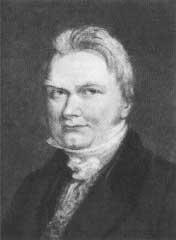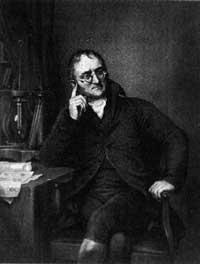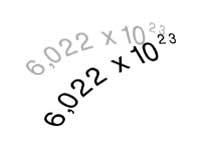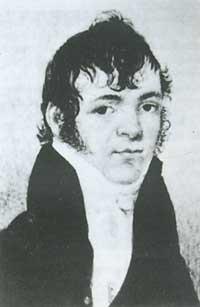Go to Jakob Berzelius
1993/06/01 Azkune Mendia, Iñaki - Elhuyar Fundazioa Iturria: Elhuyar aldizkaria
This famous Swedish chemist was born on August 20, 1779 in Vafversunda, near Linkoping. When he was a child his father died and his mother married again. When his mother also died, the godfather sent him to the University of Uppsala to study medicine. There, among other things, he was a student of Ekeberg. In his medical studies he did not stand out much, but having a great facility for chemistry, he finally obtained his bachelor's degree.
In 1807 he discovered the exact composition of many chemical compounds and, by carrying out hundreds of analyses, it was demonstrated that the law of defined proportions was fulfilled, first expressed by Proust. In passing, Dalton's atomic theory was strengthened, with Berzelius being one of the first to approve it.
Based on the works of Dulong, Petit and Mitscherlich, he began to study the atomic weight of Berzelius. Also based on the law of Gauy-Lussac, he completed the table of atomic weights of the elements. It was the first exact table of atomic weights. The fact is that the table published in 1828, compared to the current one, has only two or three gaps.

Unfortunately Berzelius did not accept Avogadro's hypotheses, so he mixed atoms and molecules.
While studying atomic weights, he had to write the full names of the elements and to overcome this inconvenience he felt more comfortable using symbols instead of names of elements and compounds. Berzelius therefore proposed to use the first letter or the first two letters of the Latin name of the element. Nitrogen, for example, would be N, oxygen O, carbon K, sulfur S, calcium Ca, gold (aurum) Au, copper (cuprum) Cu, etc. For the representation of the compounds the corresponding subscript would be used when in the molecule there were several atoms in addition to the symbols of the elements, such as calcium carbonate CO3Ca.
Dalton, preferably his pictographs, was opposed to this system of symbols, but soon spread to all corners.
Berzelius also studied electricity. After Volta showed that direct electric current could be generated by battery, he began to study its influence on Bercelius chemical compound solutions. He noted that in chemical reactions atoms constituted stable groups and that in larger and larger groups they behaved as constant sets. These sets were called radicals. He also released other theories about molecular structure, but it has been shown to have failed ever since.
Berzelius discovered chemical elements. In 1818 selenium, 1824 silicon, 1824 thorium, 1825 titanium, etc. Isomory, polymory and alotropy are concepts he himself invented.
In 1803 he published his book on Chemistry and later had another five reissues in Berzelius. He also published about 250 works in the Transactions of the Stockholm Academy.
During his stay in France he was with King Louis Philippe and in Germany with Goethe.
In 1835, at the age of 56, he married the young woman of 24 years, when the Swedish king Charles XIV granted him the title of baron.
He died in Stockholm on 7 August 1848.

Gai honi buruzko eduki gehiago
Elhuyarrek garatutako teknologia





